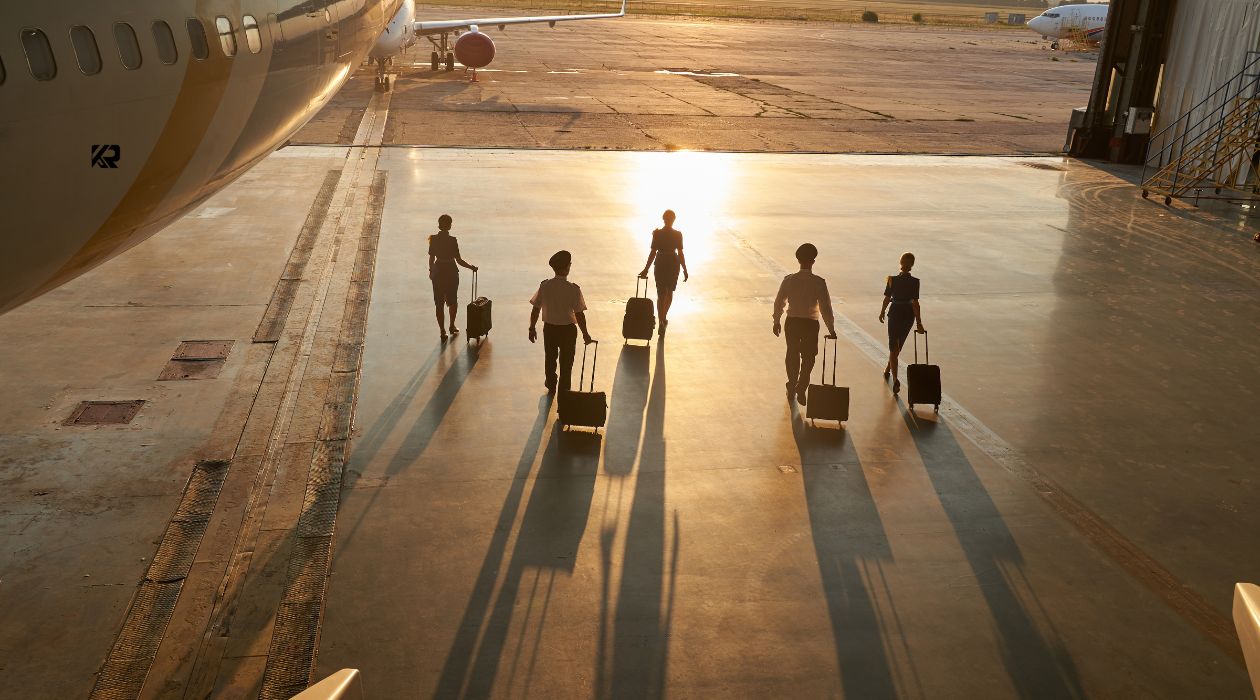
Eco vs. Durable: What's More Important in Checked-In Luggage Today?
As the travel industry worldwide continues to transform, expectations for luggage designs are also evolving. Sustainability is the priority of 2025, not a tendency. Concurrently, travellers continue to require equipment that works under pressure. There is no better place to feel this tension than in the land of checked baggage.

There is a ruthless path that checked luggage travels down: it gets placed into the conveyor belts, squeezed together, and even wheeled across the tarmac. They must be rugged. However, more and more travellers would like them to be also sustainable, low-impact, and environmentally friendly. This begs one important question: should brands focus on eco-friendly design at the cost of ensuring they are durable, or should they start with durability and forego being eco-friendly?
We, at Koora, do not doubt that the future is in the intersection, but before doing so, we want to break down how each side has been evolving and redefining what people expect of the bag they check in.
Why Durability Dominated for So Long
The epitome of luggage was durability over the decades. Provided that your bag managed to survive tens of transatlantic flights, freaky weather and excruciatingly unsafe handling in the airports, it was worth even big money.
Major-use materials such as polycarbonate, ballistic nylon and aluminium became common. Main selling points were structural integrity, reinforced corners and shock-resistant wheels. A sturdy suitcase stood you in every journey.
This was logical: at least when travelling was more handy and work-oriented. An incident like a broken handle or a cracked shell along the way may ruin the whole experience. Even in this age of polished travel agents and minimal design, the one thing travellers expect their checked-in baggage to do is to get there in one piece.
Sustainability, to many, is durability. A ten-year-old suitcase has low chances of being dumped in a landfill. It equates to a decrease in purchases and therefore a decrease in production, and the same goes on with environmental degradation in the long term, even though the materials concerned may not necessarily be environmentally certified.
The Rise of Eco-Conscious Design in Luggage
It began to change when travellers began to hold themselves accountable for the environmental effects of their decisions. What was previously thought of as a once-in-a-lifetime investment, luggage started to be questioned on how and of what it was created from.
The conventional suitcase industry may be based on virgin plastics, synthetic fabrics and intensive heavy industry, which wastes fossil fuel energy and creates big carbon imprints. Some actually go ahead to use PVC-based products, which cannot be recycled, or rather, which can hardly be recycled.
This has given way to an increase in environmentally friendly innovation. In 2025, the most established luggage brands are reconsidering each and every aspect of their luggage: shell, zippers, lining, tags and instead, choosing recycled, regenerated and biodegradable materials.
Sustainability is more than the materials. The brands are developing end-of-life systems, recycling take -and creating modular products that will allow an easy repair rather than a replacement. It is about the loop closure and making the luggage, which is not merely designed in order to be durable, but in order to be accountable.
The Trade-Off: Is One Better Than the Other?
Here’s the challenge: eco-friendly materials don’t always match the strength of conventional ones — especially under the pressures of air travel. And durable luggage made with heavy-duty synthetics may withstand a decade of trips but leave a lifetime of environmental damage behind.
For many travelers, this leads to compromise. Some opt for recycled fabrics but handle them with extra care. Others choose bomb-proof hard-shell bags that last a decade but don’t align with their sustainability values.
It’s not a perfect equation. The best eco-materials still face limits in terms of impact resistance, climate adaptability, or flexibility. Meanwhile, the most rugged materials are often petroleum-based. For brands, this has become a design challenge: how do we create luggage that can do both — last longer and harm less?
Innovation at the Intersection
The most exciting developments in the luggage industry are happening at the meeting point between durability and sustainability.
New materials are changing the game. Recycled polycarbonates are being engineered for higher strength. Regenerated nylon is now as tough as traditional synthetics. Plant-based textiles are being layered with protective coatings to boost performance without compromising biodegradability.
Equally important is the shift in how luggage is designed. Instead of replacing an entire bag when one wheel breaks, travellers can now access modular parts, lifetime repair kits, and upgrade programs. This approach doesn’t just extend a bag’s lifespan — it reduces the environmental impact dramatically.
Koora’s upcoming line of checked-in luggage is built around this exact philosophy. We use:
-
Recycled hard shells engineered for structural integrity
-
Modular design systems that let users replace components easily
-
Low-impact production that minimises water and energy use
-
End-of-life recycling partnerships that close the loop
We’re not just trying to be more sustainable — we’re building bags that help our customers travel better, with confidence and conscience.
Changing Consumer Behaviour
What’s fueling this shift is more than just product innovation — it’s the consumer mindset. Travellers today are more informed and more intentional than ever before.
They ask where their luggage is made, what it’s made from, and how the brand supports repairability or recycling. They value minimalist design, not just for style, but because it often means less waste and longer wearability.
More importantly, they no longer separate durability from sustainability. They understand that a truly good product should do both — survive impact while minimising its own.
In this context, aesthetics also play a role. Timeless design reduces the desire to replace a suitcase every few seasons. Neutral tones, clean silhouettes, and thoughtful functionality reduce wasteful upgrades. Travellers want products that outlast trends and support a more circular lifestyle.
The Koora Standard: Built to Last. Built to Matter.
At Koora, we don’t believe in compromise. Our checked-in luggage is built to handle every challenge the airport can throw at it, while staying true to our mission of sustainable design.
Every element is chosen with care:
-
Strong recycled shells that pass impact tests
-
Handles and wheels that can be swapped or repaired
-
Interiors made from upcycled fabrics
-
Minimal branding for timeless appeal
-
Packaging that’s plastic-free and biodegradable
We believe luggage shouldn’t just survive the journey — it should reflect the journeyer’s values.
The Bottom Line
The question isn’t eco or durable anymore — it’s how to combine both, intelligently and intentionally. In 2025, travellers no longer settle for products that excel in one area but fail in another. They want luggage that works hard, lasts long, and respects the planet.
Checked-in luggage is a big decision, not just for function, but for footprint. And that’s exactly why at Koora, we’re designing for travellers who know the weight of their choices.



Leave a comment
This site is protected by hCaptcha and the hCaptcha Privacy Policy and Terms of Service apply.